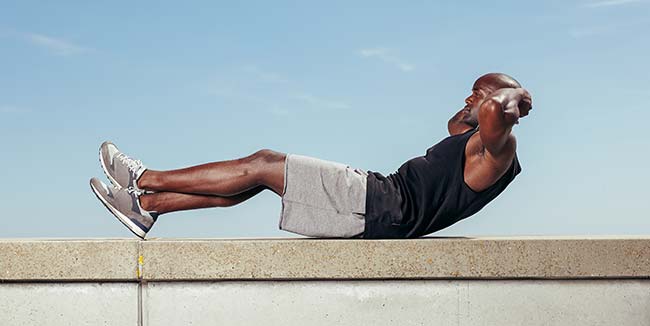
The recent article on abdominal muscles resulted in several comments and questions. I will address many of them here.
Several people asked about low back pain and abdominal muscle tone. While traditionally, the notion that tightness in the lumbar spine is due to poor abdominal function, there is much more. Recall that muscle imbalance is the combination of weakness and tightness, often with associated pain. This is the common condition of poor functioning abdominals with low tone, and back muscles that are too tight. But tightness can occur all the way up the spine into the neck as well. So mid- and upper back pain can also be caused by weak abdominals.
In addition, the abdominals have a synergistic relationship with the muscles in the front of the neck. Poor abdominal tone can result in tight and painful muscles in the back of the neck, and even the head and shoulders. This is especially common in people who sit too much.
While weak and tight muscles may hurt, those imbalances can also create joint pain. There are many joints throughout the spine and pelvis, and if poor muscle balance exists, improper joint movement follows leading to inflammation and chronic pain.
Another Abdominal Muscle
There is another abdominal muscle not mentioned in the article. The very small pyramidalis is located in the middle of the lower part of the abdomen, in front of the rectus. Attaching to the pubic bone of the pelvis and going upward only a couple of inches, this muscle probably contracts with the lower fibers of the rectus, and possibly along with the pelvic floor muscles.
No-Name Technique
Many techniques and systematic methods can improve abdominal muscles and overall body function. I won’t comment on each one other than to say they can all have value when applied properly. However, an important point of my article is that conscious awareness of abdominal action—being able to feel the muscles contract and retrain them as needed—is vital to improve the function between brain and body, thereby allowing the abdominal muscles to perform their job whether you are aware of them or not.
Walking-Running?
Some people were surprised to read walking and running can help tone the abdominals. Many people have neglected their belly tone, which renders these muscles less active during any movement. But those who use the abdominals more in day-to-day movement also contract them during walking and running. A recent study (Applied Physiology, Nutrition, and Metabolism, 2009, 34(6): 1008-1016) showed that triathletes who use their abdominals due to natural cross-training, activate these muscles more while running compared to runners who don’t cross train.
Vocalizing
The abdominal muscles also play a key part in communication. Both vocalization—simple talking—and singing are best performed standing. In this position, the abdominals can flex the trunk for more effective breathing and body language, resulting in better tone, power and pronunciation.
The Brain
Because the abdominals are so extensive in the body, directly and indirectly affecting many areas, these muscles can significantly influence the brain. Through proper use of all the abdominal fibers, improved body movement and brain function can follow. Essentially, muscle movement begins and ends in the brain. As this neurological stimulation increases, the brain develops more circulation of blood leading to more brain areas “turning on.” This is the reason why exercise improves many neurological activities.
Increased movement is a powerful therapy in itself. It not only helps locomotion, posture, independence, and other physical factors, but can also help improve speech, vision, balance, memory, and even intellect.
Abdominal Testing
Like most other muscles, an important way to assess the abdominals is manual testing, although it is not easy to isolate each part. While evaluating their function, the same stimulation of contraction provides a simple way to treat them through biofeedback. This can increase their overall function and strength.
If you missed the original article, click here.
—Dr. Phil








